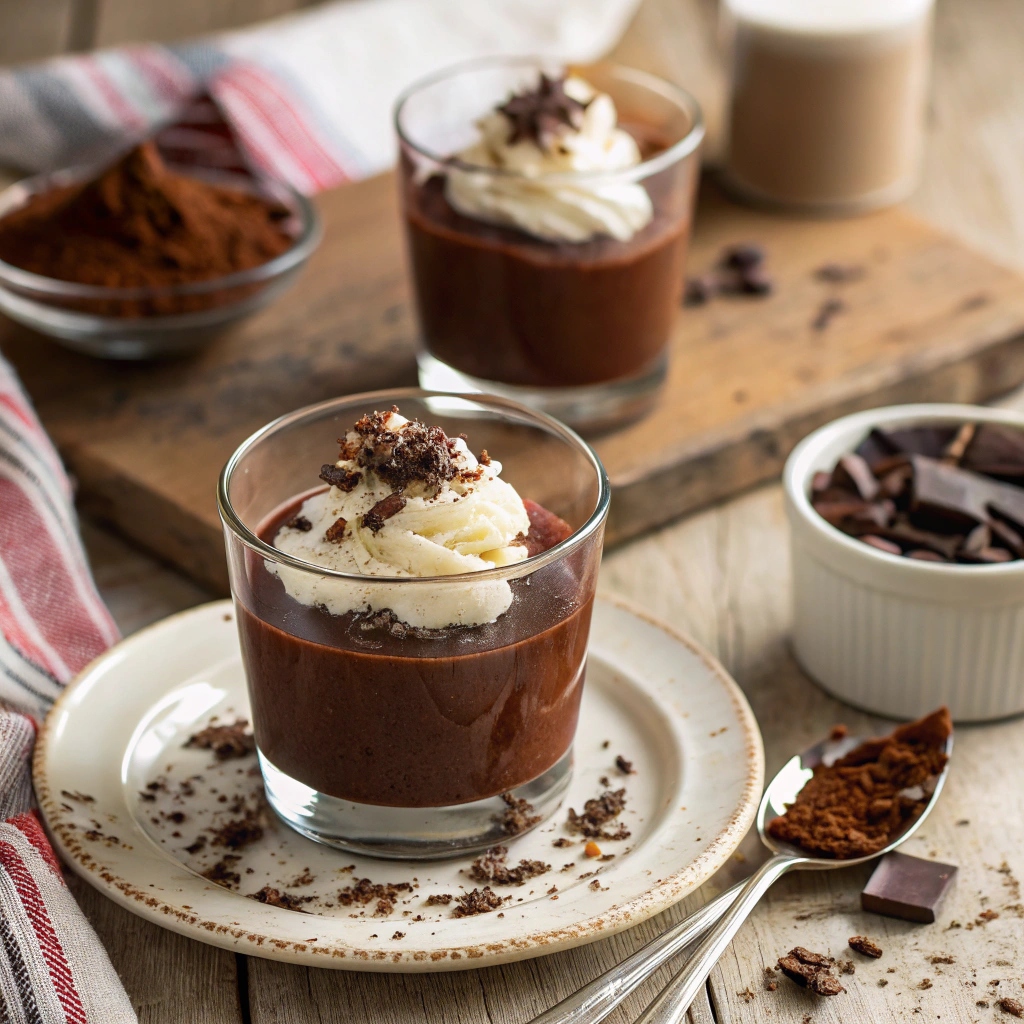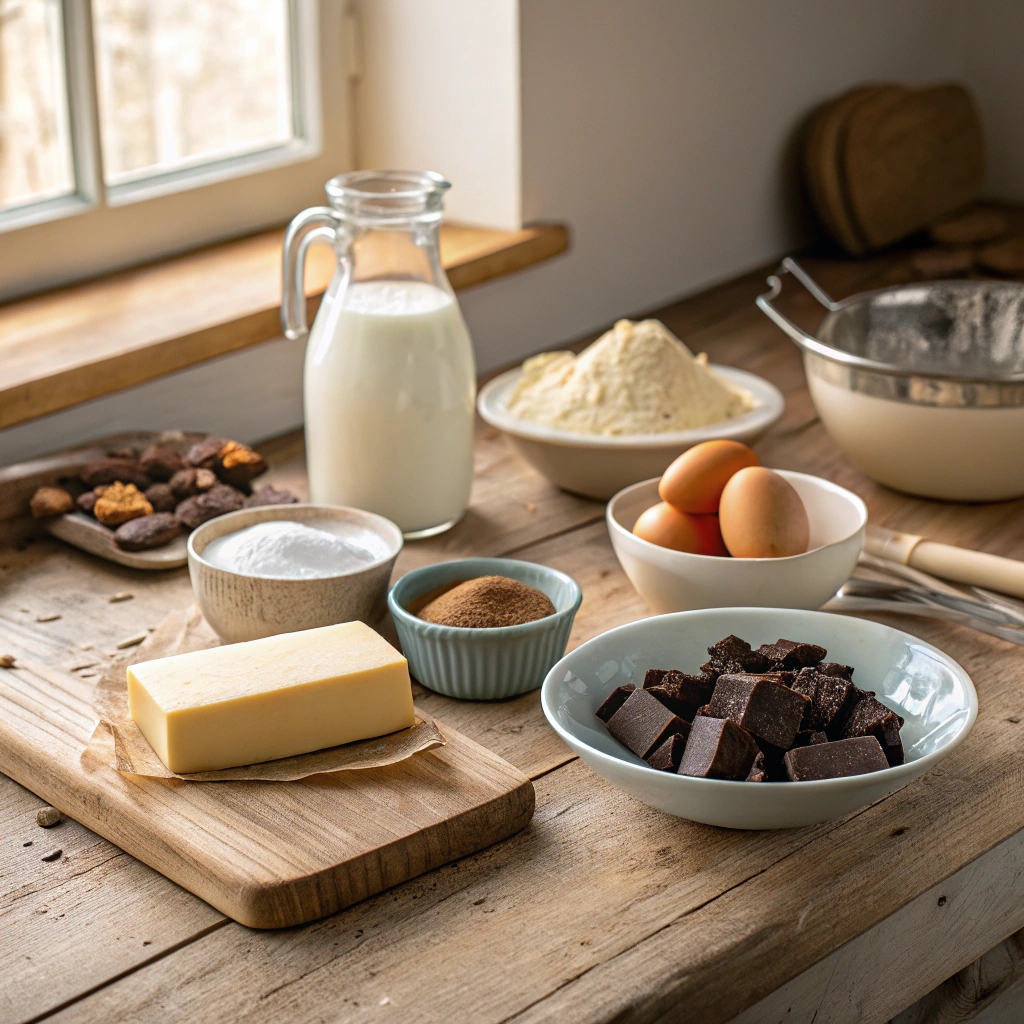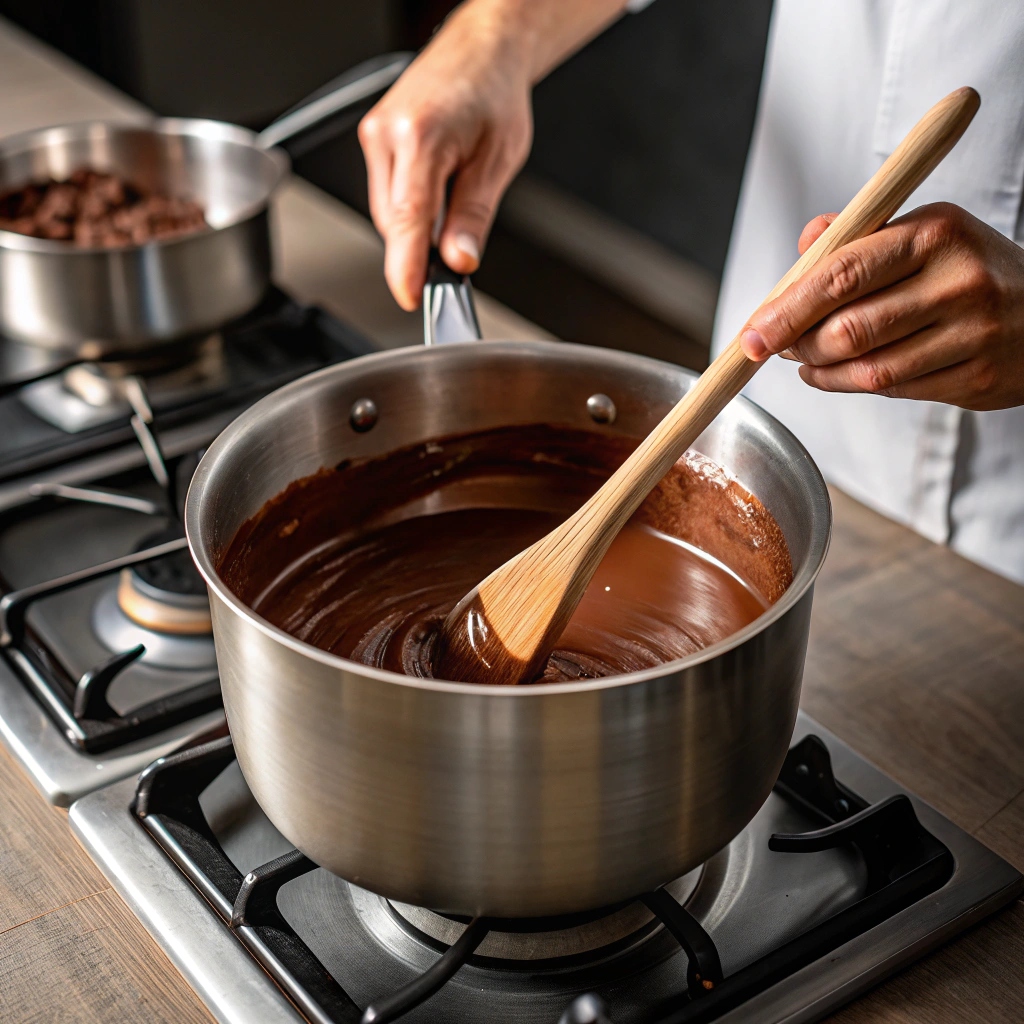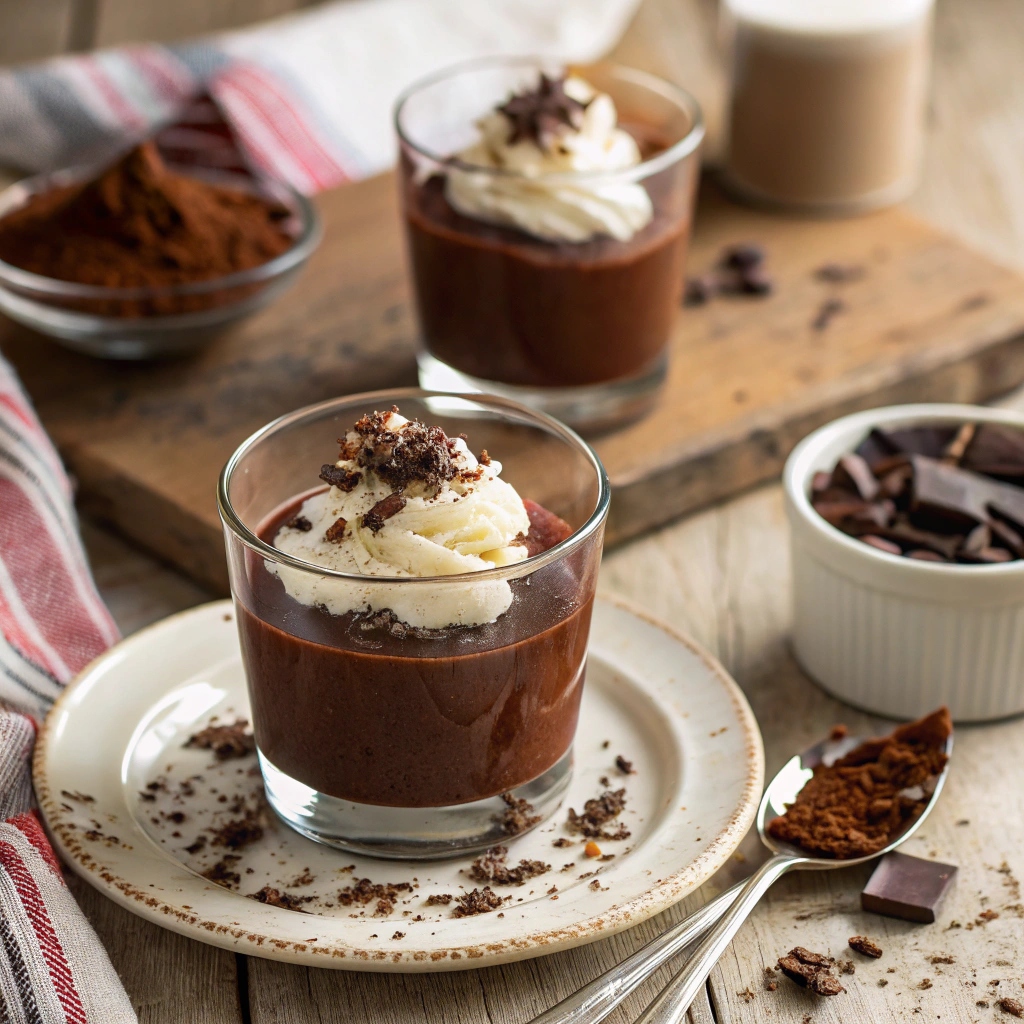
When it comes to indulgent desserts, chocolate budino holds a special place in the world of Italian cuisine. This rich, creamy treat, often described as Italy’s version of chocolate pudding, is more than just a dessert – it’s a journey through flavors and textures that delight the senses. In this article, we’ll explore everything about chocolate budino, from its fascinating origins to its step-by-step preparation, and even creative ways to serve it. Whether you’re a seasoned chef or a novice baker, this guide is tailored to help you create the ultimate chocolate budino experience. Let’s dive in!
What is Chocolate Budino?
Definition and Origins
Chocolate budino, also known as budino al cioccolato, is a traditional Italian dessert that features a custard-like texture and a rich chocolate flavor. Derived from the Italian word “budino,” which loosely translates to pudding, this dish is a staple in Italian homes and restaurants alike.
Etymology of ‘Budino’
The word “budino” has roots in Latin and Old Italian, reflecting its long-standing history in Italian culinary traditions. Over centuries, the term evolved to represent sweet and savory custards, with the chocolate variation becoming an undeniable favorite.
Historical Background
Dating back to Italy’s Renaissance era, chocolate budino was originally considered a luxurious treat, reserved for special occasions. With the spread of chocolate from the Americas to Europe, it gained immense popularity among Italian aristocracy. Today, it’s celebrated worldwide as a symbol of indulgence and craftsmanship.
Popularity in Italian Cuisine
Chocolate budino is not just a dessert but an emblem of Italian heritage. Its ability to blend rich, dark chocolate with creamy textures makes it a crowd-pleaser. From cozy family dinners to high-end Italian eateries, this dessert is a testament to the timeless appeal of traditional recipes.
In the next part, we’ll uncover the essential ingredients and detailed preparation steps that bring chocolate budino to life. Stay tuned for a deep dive into the world of flavors and techniques!

Ingredients and Preparation
Key Ingredients for Chocolate Budino
Essential Components
To create an unforgettable chocolate budino, the choice of ingredients is paramount. The foundation of this dessert lies in its simplicity and quality. Every component must work harmoniously to deliver the smooth, decadent texture and rich chocolate flavor that define this treat.
Types of Chocolate Used
The star of the show is, of course, chocolate. Opt for high-quality dark chocolate with a cocoa content of at least 70% to ensure a robust flavor. While milk chocolate can be used for a milder profile, dark chocolate lends the richness that sets chocolate budino apart.
Role of Dairy Products
Dairy plays a crucial role in achieving the creamy consistency. Whole milk and heavy cream are the most common choices, providing the luscious texture that’s characteristic of this dessert. Ensure they are fresh for optimal results.
Sweeteners and Thickeners
Granulated sugar is a standard sweetener, but you can experiment with alternatives like brown sugar for a deeper flavor. Egg yolks and cornstarch act as natural thickeners, giving the dessert its silky, custard-like body.
Optional Flavor Enhancements
Incorporating Liqueurs
While traditional recipes avoid alcohol, non-alcoholic flavor extracts like almond or orange can mimic similar depth and complexity. These small additions elevate the flavor without overshadowing the chocolate.
Adding Spices and Extracts
Vanilla extract is a classic addition that enhances the overall sweetness. For a twist, you can also incorporate cinnamon or cardamom to introduce subtle warmth and aroma.
Garnishing Options
Finish your budino with creative toppings! Whipped cream, chocolate shavings, or a sprinkle of sea salt can add texture and visual appeal. Fresh fruits like raspberries or strawberries are also great for a refreshing contrast.
Step-by-Step Preparation Guide
Preparing the Ingredients
Begin by gathering all your ingredients. Chop the chocolate into small pieces for even melting, separate the egg yolks from whites, and measure out your milk, cream, and sugar. Having everything ready ensures a smooth cooking process.
Cooking Process
Melting the Chocolate
Place your chopped chocolate in a heatproof bowl. Set it over a pot of simmering water, ensuring the bottom of the bowl doesn’t touch the water. Stir continuously until the chocolate is smooth and glossy.
Combining Ingredients
In a separate saucepan, heat the milk, cream, and sugar over medium heat until it begins to steam but does not boil. Slowly pour a small amount of the warm mixture into the whisked egg yolks, tempering them. Gradually add the tempered yolks to the rest of the milk mixture, stirring constantly.
Achieving the Right Consistency
Once combined, add the melted chocolate to the mixture. Continue stirring over low heat until the mixture thickens enough to coat the back of a spoon. This step ensures a velvety texture.
Cooking Time and Temperature
Cook the budino on low heat for 8–10 minutes, ensuring it doesn’t boil. This gentle cooking allows the flavors to meld while preventing the custard from curdling.
Cooling and Serving
Pour the mixture into serving glasses or ramekins and let it cool to room temperature. Cover with plastic wrap, ensuring it touches the surface to avoid a skin forming. Refrigerate for at least 4 hours or overnight. Garnish before serving for the perfect finishing touch.
Next, we’ll explore exciting variations and serving ideas to elevate your chocolate budino experience. Stay with us!

Variations and Serving Suggestions
Popular Variations of Chocolate Budino
Regional Differences in Italy
Italy’s diverse culinary landscape has given rise to several regional variations of chocolate budino. In northern regions like Piedmont, the dessert often incorporates hazelnuts, reflecting the local love for nutty flavors. Meanwhile, southern Italy sometimes infuses citrus zest, adding a tangy brightness to balance the richness of chocolate. Each variation showcases the distinct regional ingredients and traditions of Italy.
Modern Twists on the Classic Recipe
Creative chefs and home bakers have developed innovative twists on the traditional budino. Incorporating salted caramel or espresso creates layers of complexity, while layering the dessert with cookie crumbs or cake introduces texture. These modern adaptations not only enhance the flavor profile but also make the dessert visually appealing.
Dietary Adaptations
Vegan and Dairy-Free Options
For a vegan version, substitute dairy milk and cream with almond milk or coconut cream. Use dark chocolate labeled as dairy-free, and replace egg yolks with cornstarch or arrowroot powder for thickening.
Gluten-Free Alternatives
Traditional chocolate budino is naturally gluten-free, but be mindful of cross-contamination with toppings. Use certified gluten-free garnishes like crushed nuts or fruits to keep it safe for those with gluten sensitivities.
Serving Suggestions and Pairings
Ideal Accompaniments
The creamy richness of chocolate budino pairs beautifully with light accompaniments. Fresh berries such as raspberries or strawberries add a refreshing contrast, while nuts like pistachios or almonds provide a delightful crunch. For a hint of freshness, a sprig of mint works wonders.
Complementary Desserts
Pairing chocolate budino with complementary desserts creates a memorable dining experience. Serve alongside a small biscotti or almond cookie for textural variety. Alternatively, a dollop of fruit compote enhances the overall flavor balance.
Presentation Tips
Elevate your budino presentation with simple yet striking touches. Serve it in clear glasses or ramekins to showcase its silky texture. Garnish with a drizzle of chocolate sauce, a dusting of cocoa powder, or even edible flowers for an elegant finish. A well-presented dessert not only looks appetizing but also highlights the care and attention to detail in its preparation.
Up next, we’ll address the most frequently asked questions about chocolate budino to ensure your dessert-making journey is as smooth as the dish itself!
Frequently Asked Questions (FAQs)
FAQs about Chocolate Budino
What is the difference between budino and pudding?
While chocolate budino and pudding might appear similar, their textures and preparation methods differ. Traditional pudding often relies on cornstarch as the primary thickener, resulting in a softer consistency. In contrast, budino al cioccolato incorporates egg yolks, creating a richer, custard-like texture. Moreover, budino tends to have a more intense flavor due to the use of high-quality chocolate and cream. This Italian dessert feels more luxurious and sophisticated compared to its American counterpart.
Can I make chocolate budino ahead of time?
Absolutely! Chocolate budino is an excellent make-ahead dessert. In fact, it’s often better when prepared a day in advance, allowing the flavors to fully develop as it chills. After cooking, pour the mixture into individual serving dishes, cover with plastic wrap to prevent a skin from forming, and refrigerate. When you’re ready to serve, simply add your favorite toppings. Preparing ahead not only saves time but also ensures a perfect texture for your guests.
How should I store leftover budino?
Storing leftover chocolate budino is simple. Cover the dessert tightly with plastic wrap or transfer it to an airtight container. Store it in the refrigerator for up to three days. To maintain its silky texture, ensure the plastic wrap touches the surface to avoid a film forming. Before serving, you can let it sit at room temperature for a few minutes to soften slightly, but avoid reheating as it may affect the consistency.
What toppings go well with chocolate budino?
The toppings you choose can enhance both the flavor and presentation of your chocolate budino. Popular options include freshly whipped cream, shaved dark chocolate, or a light dusting of cocoa powder. For a fruity twist, add fresh berries like raspberries or strawberries. Crushed nuts, such as pistachios or hazelnuts, bring a satisfying crunch, while caramel or chocolate drizzle offers extra indulgence. Feel free to get creative and tailor your toppings to suit the occasion or your personal taste.
Next, we’ll wrap up this article with a heartfelt conclusion that recaps the charm and versatility of chocolate budino. Stay tuned!
Part 5: Embracing the Delight of Chocolate Budino
Recap of Its Appeal
Chocolate budino is more than just a dessert; it’s a culinary masterpiece that blends rich flavors with a luxurious texture. Rooted in Italian tradition, this custard-like treat showcases the beauty of simplicity, relying on high-quality ingredients to create something extraordinary. Whether served at a family gathering or a formal dinner, its versatility and decadent taste make it a crowd-pleaser. Paired with creative toppings or accompaniments, it’s a dessert that leaves a lasting impression.
Encouragement to Try Making It at Home
Creating chocolate budino at home might seem intimidating at first, but the process is straightforward and immensely rewarding. With the guidance provided in this article, you have all the tools needed to craft a dessert that’s both delicious and visually stunning. Experiment with flavors, customize toppings, and let your creativity shine. As you perfect your recipe, you’ll not only gain confidence in the kitchen but also bring a touch of Italy’s culinary heritage into your home. So, why wait? Roll up your sleeves, gather your ingredients, and treat yourself to the velvety delight of chocolate budino. You won’t regret it!
This concludes our exploration of chocolate budino. With the knowledge and inspiration from this guide, you’re ready to embark on your dessert-making adventure!

